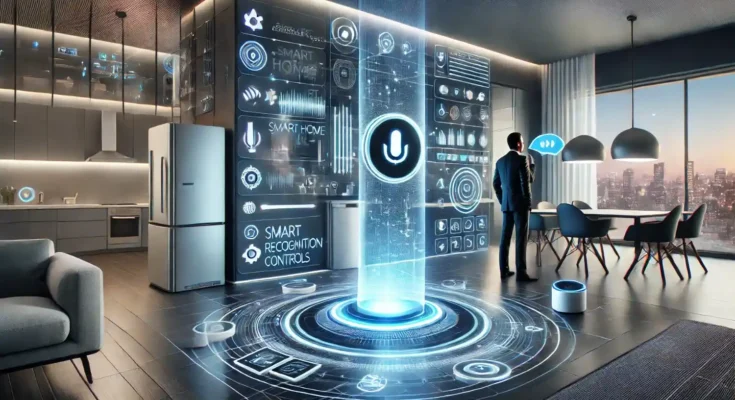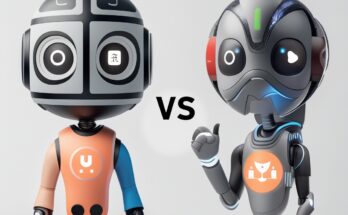Voice Activated Technology: Transforming the Way We Interact with Devices
Voice activated technology, often referred to as voice recognition or voice-controlled technology, has become a cornerstone of modern digital innovation. Its applications extend from the convenience of controlling smart home devices to empowering accessibility for individuals with disabilities. As this technology matures, it is reshaping the way humans interact with machines, making digital interactions more natural and intuitive.
The Evolution of Voice Technology
Voice activated technology is not a recent invention but has significantly evolved over the decades. The journey began in the 1950s with Bell Laboratories’ “Audrey,” one of the first voice recognition systems capable of understanding spoken digits. In the 1960s and 70s, IBM’s “Shoebox” advanced the field, handling a vocabulary of sixteen English words.
Fast forward to the 1990s, and speech recognition systems like Dragon Dictate allowed users to dictate text to their computers, albeit with limitations in accuracy and processing speed. However, the advent of machine learning, cloud computing, and neural networks in the 21st century transformed voice technology. The launch of Apple’s Siri in 2011 was a game-changer, showcasing how voice assistants could serve as personal digital companions. Other tech giants, including Amazon (Alexa), Google (Assistant), and Microsoft (Cortana), soon followed suit, embedding voice-activated capabilities into their ecosystems.
How Voice-Activated Technology Works
At its core, voice-activated technology relies on several sophisticated processes:
- Automatic Speech Recognition (ASR): This process translates spoken words into text. Using algorithms trained on vast datasets, ASR systems recognize patterns in speech to interpret commands accurately.
- Natural Language Processing (NLP): Once the spoken input is transcribed, NLP algorithms analyze the text to extract meaning. This includes understanding context, syntax, and semantics to determine the user’s intent.
- Text-to-Speech (TTS): For responses, the system converts text into spoken language, ensuring communication feels conversational and engaging.
- Machine Learning: These systems improve over time by learning from user interactions. Machine learning models adapt to different accents, languages, and speaking styles, increasing the accuracy and reliability of the technology.
- Cloud Computing: The heavy computational requirements of voice processing are often offloaded to cloud servers, enabling real-time responses even for complex queries.
Applications of Voice-Activated Technology
The versatility of voice-activated technology has made it ubiquitous across various industries:
- Smart Homes: Voice-controlled assistants like Amazon Echo and Google Nest have redefined home automation. Users can adjust thermostats, control lighting, and play music with simple voice commands.
- Healthcare: In hospitals, voice technology assists with hands-free documentation, patient monitoring, and even surgical procedures. For patients, it enhances accessibility, especially for those with mobility challenges.
- Automotive Industry: Voice control systems in vehicles improve safety by enabling hands-free navigation, calling, and entertainment. Manufacturers like Tesla and BMW are integrating advanced voice assistants into their cars.
- Retail and E-Commerce: Virtual shopping assistants powered by voice recognition streamline the shopping experience. Amazon’s Alexa, for instance, can place orders, provide product recommendations, and track shipments.
- Customer Service: Chatbots and virtual agents leverage voice recognition to resolve customer queries more efficiently. These systems are available 24/7, reducing the need for human intervention in repetitive tasks.
- Education: Voice-activated technology is becoming a critical tool in classrooms. It helps children with disabilities learn effectively and provides personalized assistance to students struggling with traditional methods.
- Entertainment: Streaming platforms and gaming consoles now support voice commands, allowing users to search for content, change settings, or control playback effortlessly.
Benefits of Voice-Activated Technology
- Convenience and Speed: Voice commands are often faster and more intuitive than typing or navigating through menus.
- Accessibility: This technology bridges the gap for individuals with physical disabilities or visual impairments, enabling them to use digital tools independently.
- Hands-Free Operation: Whether driving a car or cooking in the kitchen, voice control allows users to multitask safely and efficiently.
- Personalization: Voice assistants learn user preferences over time, providing tailored recommendations and a more engaging experience.
- Language Expansion: Modern systems support multiple languages, making them accessible to a global audience.
Challenges in Voice-Activated Technology
Despite its many advantages, voice-activated technology faces several hurdles:
- Accuracy and Recognition Issues: Accents, dialects, and background noise can affect the accuracy of voice recognition systems, leading to misinterpretation of commands.
- Privacy Concerns: Devices that continuously listen for activation commands can raise concerns about data security and unauthorized recording.
- Dependence on Internet Connectivity: Most voice-controlled systems rely on cloud computing, which requires a stable internet connection to function effectively.
- Limited Context Understanding: While NLP has improved significantly, these systems sometimes struggle with ambiguous commands or nuanced language.
- Ethical and Social Implications: The use of voice data for training AI raises questions about consent and the potential for misuse.
The Future of Voice-Activated Technology
As technology evolves, voice-activated systems are expected to become even more sophisticated. Key trends shaping the future include:
- Enhanced Multimodal Interactions: Combining voice with other input methods like gestures, touch, and visual cues will make human-machine interaction more seamless.
- Edge Computing: Processing voice data locally on devices instead of relying solely on cloud servers will address latency and privacy concerns.
- Contextual Awareness: Future systems will better understand context, enabling them to provide more accurate and meaningful responses.
- Integration with IoT: Voice-activated technology will become central to the Internet of Things (IoT), enabling smarter, more connected environments.
- Expansion into New Industries: From agriculture to aerospace, voice technology will find applications in domains currently untouched by its capabilities.
- Improved Accessibility Features: Efforts to enhance inclusivity will drive innovations that cater to diverse user needs, such as multilingual support and assistive technologies.
Ethical Considerations
As voice-activated technology permeates daily life, ethical considerations become paramount. Transparency about how voice data is used and stored is essential to maintaining user trust. Developers must also prioritize inclusivity by designing systems that recognize diverse voices and languages. Addressing these issues proactively will ensure that this technology serves all users equitably.
Conclusion
Voice-activated technology has come a long way from its rudimentary beginnings to becoming an integral part of modern life. Its ability to simplify tasks, improve accessibility, and enhance user experiences highlights its transformative potential. However, addressing challenges related to accuracy, privacy, and inclusivity will be critical to unlocking its full potential. As this field continues to evolve, it promises a future where interacting with technology feels as natural as conversing with another person.



